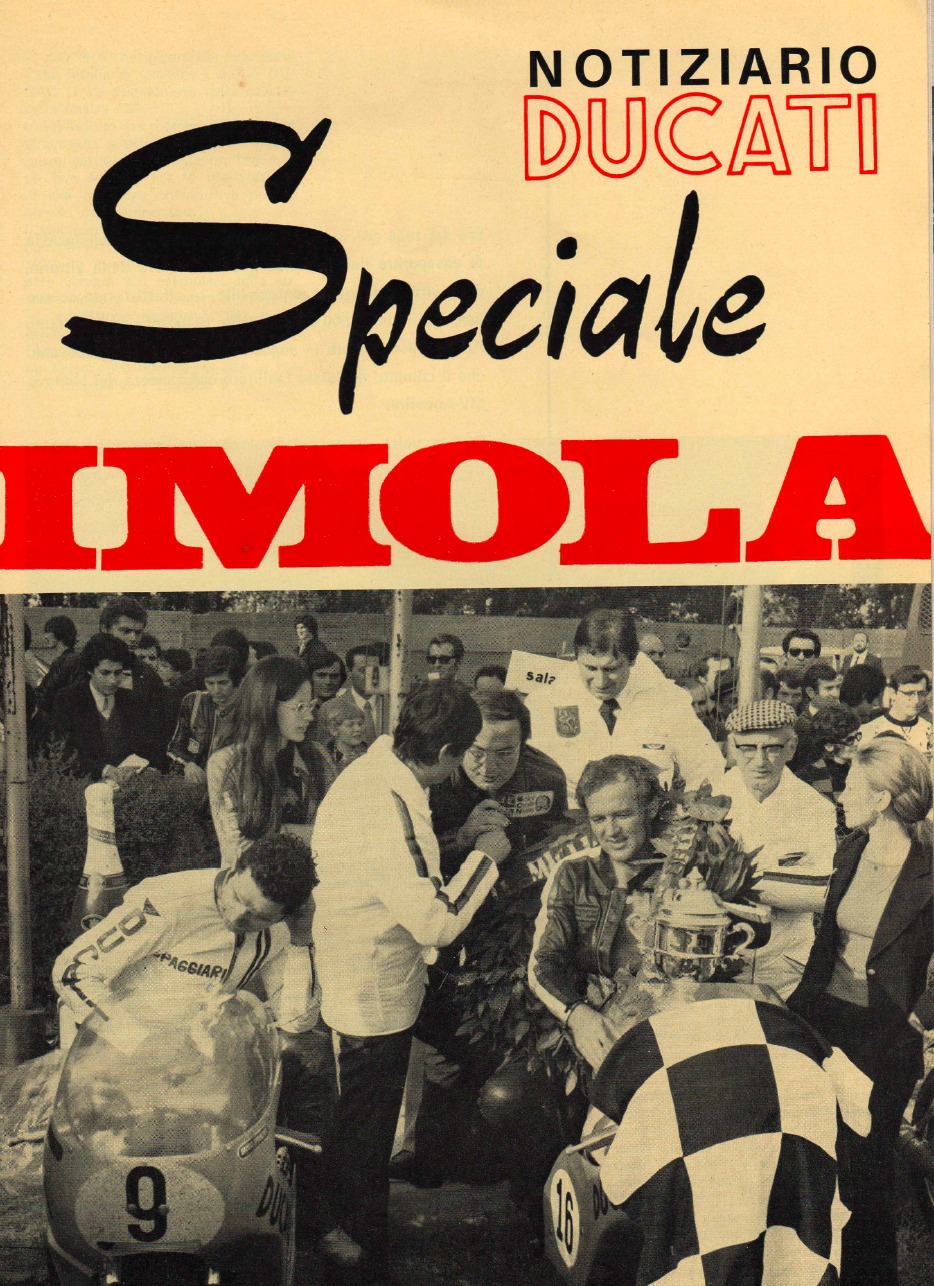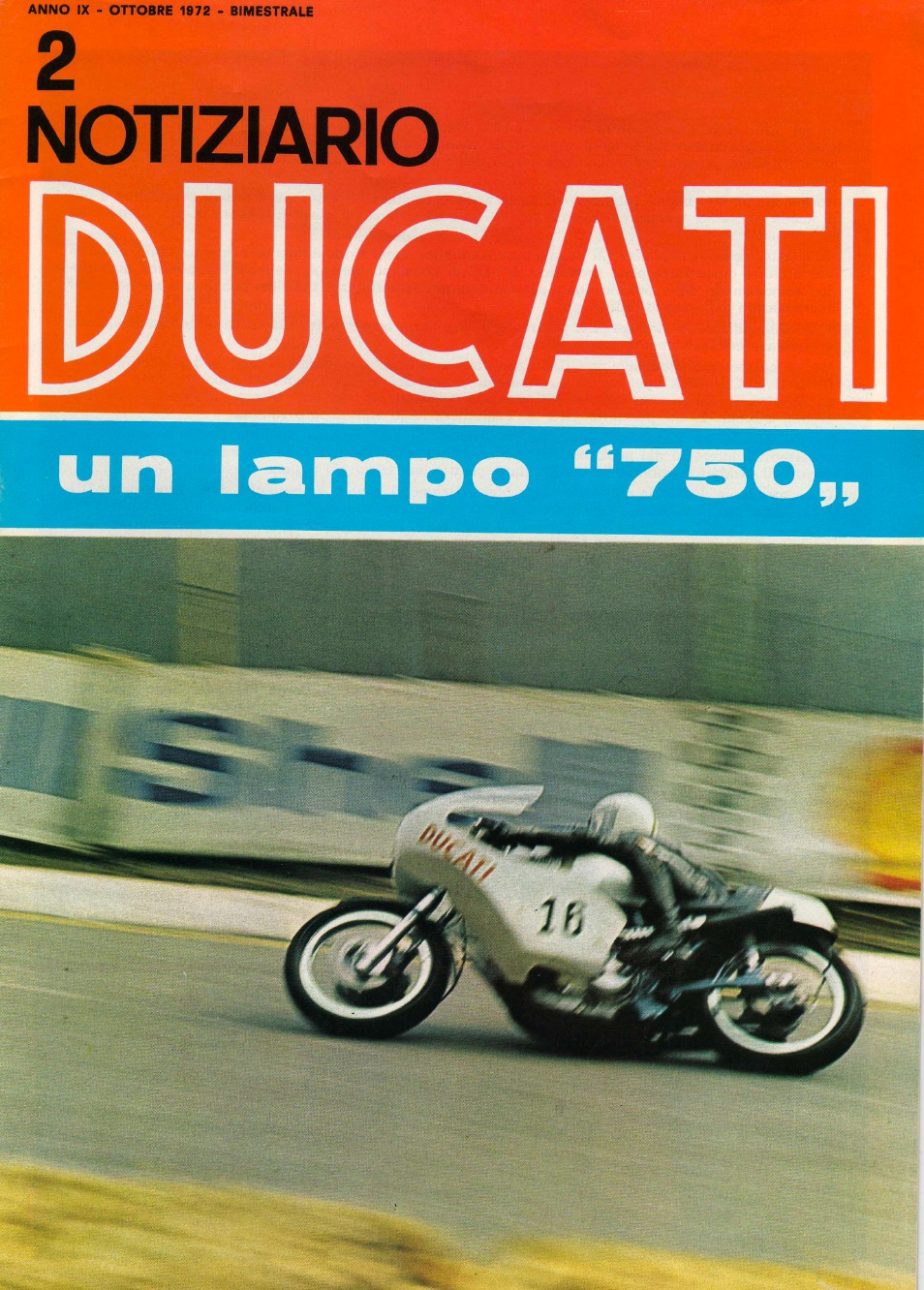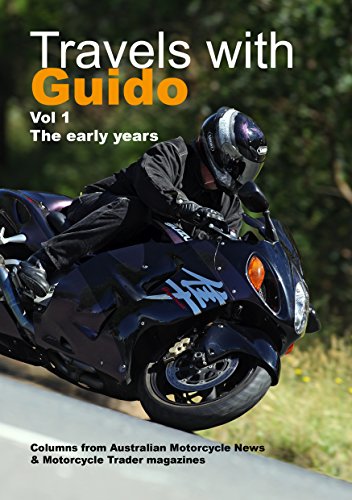Motorcycle Investor mag
Subscribe to our free email news
Ducati's landmark Imola victory

(by
Ian Falloon, April 23, 2022)
Today marks the 50th anniversary of what many
regard as the true start of the Ducati legend
In Ducati folklore the 1972
Imola 200-mile race is a defining event. Before Imola
Ducati was a minor Italian motorcycle manufacturer of
esoteric four-stroke singles with strange valve gear,
but after Imola they could take on the worlds best and
comprehensively beat them. As Ducati’s great engineer
Fabio Taglioni said in 1974, “When we won at Imola we
won the market too.” It was the Imola victory that
ostensibly set the stage for Ducati’s subsequent
success.
Imola would never have
happened if Ducati hadn’t just introduced their 750cc
V-Twin, and this only came about through the 1969
company restructure. The decade of the 1960s had been
difficult for Ducati. A series of dubious business
ventures nearly strangled the company, and it would have
sunk into oblivion like many Italian motorcycle
manufacturers but for quasi government bailout every
year.
During 1969 the financial
situation was so precarious that Ducati was absorbed as
part of the EFIM (Ente Finanzaria per gli Industrie
Metalmeccaniche) group. At the end of 1969 new directors
were appointed and Ducati Meccanica was given a new
lease of life. Arnaldo Milvio was appointed Managing
Director, with Fredmano Spairani as Coordinating
Director, and they came to Ducati Meccanica with a fresh
approach. Somehow, they found the resources to develop
the new 750 Twin and instigate a racing program.
When the 750 was conceived
Fabio Taglioni was 49 years old. But the father of
desmodromic valve gear for motorcycles was virtually
unknown outside Italy, and Ducati was still a minor
motorcycle manufacturer in world terms. Despite the new
management, economic viability was essential, and
Taglioni was instructed to utilize as much carryover
technology from the existing range of singles as
possible.
A V-twin made sense as many
features of the existing overhead camshaft singles could
be incorporated, and Taglioni liked the idea of an
engine that was little wider than a single. Taglioni
chose a 90-degree V-twin layout, a carryover from the
V-four Apollo seven years earlier. In one of several
interviews I asked Taglioni why he chose the 90-degree
cylinder layout. Taglioni replied, “The 90-degree L-twin
provided perfect primary balance. The engine can be very
smooth, with only some high frequency secondary
imbalance, and with a narrow crankshaft there is
virtually no rocking couple. Also the twin can be narrow
so the engine can be kept low in the frame while
maintaining good ground clearance.”
Along with the development of
the 750 Taglioni was also working on a 500cc Grand Prix
twin. With a special frame by Colin Seeley Bruno
Spaggiari, and later Phil Read, campaigned this in
mainly Italian events during 1970 and 1971. Although the
twin struggled against the MV triples much was learnt
that would help when it came to the preparation of the
Imola machines in 1972. A 750cc version was also built,
Mike Hailwood testing this at Silverstone in July
1971.He qualified sixth fastest but decided not to ride
it as he felt it didn’t handle well enough.
With the announcement of the
Imola 200 “Daytona of Europe” to be held on April 23,
1972, Spairani instructed Taglioni to mount a full-scale
attempt at winning the race. With record prize money the
Imola 200 was to be one of the biggest race meetings
ever staged in Europe, and Imola was in Ducati’s back
yard, only a short skid down the autostrada from
Bologna. Spairani was determined to hire a top rider to
head a line-up of six entries. He approached Jarno
Saarinen, Renzo Pasolini, and Barry Sheene, Spairani
visiting Sheene at the end of February to secure the
deal. Although Sheene didn’t end up riding the Ducati
because they couldn’t agree to the fee, he was still
listed in the program riding number 18.
In early March Taglioni and a
group of leading Italian motorcycle engineers traveled
to Daytona for the 200-mile Formula 750 race. Taglioni
came back optimistic. While he found the speed of the
350 Yamahas devastating he knew they weren’t eligible to
race at Imola. With the Yamaha out of the equation
Taglioni looked at the rest of the competition. Mostly
four-stroke, he reasoned he could build a
better-balanced machine particularly suited to the Imola
circuit. He took ten production 750 frames and began
building a batch of Formula 750 racers. It was
originally intended to build ten machines for six
riders, but according to Taglioni in an interview in
1995 only six were officially certified, with one spare,
for four riders.
Right until the last minute
there was uncertainty as to who would ride the works
Ducatis. Ducati hadn’t mounted such a factory racing
effort since 1958 and all the top riders were skeptical,
none believing the Ducati twin would be competitive.
Already signed were Bruno Spaggiari (on number 9),
Ermanno Giuliano (45), Vic Camp’s rider Alan Dunscombe
(39), and Gilberto Parlotti (24), although he also
didn’t race.
Needing another top rider,
British distributor Vic Camp suggested Spairani approach
Paul Smart, then racing a Kawasaki H2-R for Team Hansen
in America. As there was no race in America that weekend
Paul’s wife Maggie accepted the invitation in his
absence and Smart initially wasn’t too impressed. But
Ducati was paying good money and after a Triumph ride
fell through, Smart was soon down in the program on
Ducati number 16, listed just ahead of his
brother-in-law Barry Sheene.
The first Imola race bike was
completed in time for a Modena test by Spaggiari on 6
April in preparation for the first official test session
on 19 April. Incredibly this was only four days before
the race and only five machines were available, Smart,
Dunscombe, and Giuliano riding them for the first time.
Smart had only just arrived from a race at Road Atlanta
and was initially unimpressed saying, “It was so long it
looked will it would never go around a corner, but after
riding it I found it deceptively fast. Ducati had
obviously put a lot of effort into it. It just felt slow
revving, like it fired every lamp post.”
All Smart found to criticize
were the street Dunlop K81 “TT100” tires, and extremely
high footpegs. After altering the footpegs Smart went
out again, breaking Agostini’s lap record on street
tires. Ducati was reluctant to change the tires, fearing
racing tires wouldn’t last 200 miles but Smart persuaded
Taglioni to procure some Dunlop KR83 and KR84 racing
tires.
Although the racing
desmodromic 750s looked surprisingly similar to the GT
and Sport, they were highly developed factory racers
sharing little with the production 750. Phil Schilling,
Cycle magazine's managing editor at the time, saw the
bikes in the Ducati race shop a few days before Imola.
He wrote, "The first thing I saw, the thing that
immediately dented my mind, was a center stand.
These factory racers were all
parked on center stands, stock center stands, which were
connected to stock frames, which joined standard front
forks and near-stock swingarms. And the production-line
frames held embarrassingly standard-looking engines.
Sure, there were special pieces: big Dell'Orto
carburetors, high-rise/low-rise megaphones, dual discs
in the front and single discs in the rear, oil coolers,
hydraulic steering dampers, and racing shocks. But where
were all the really trick parts? There weren't any."
Schilling’s observations were
as accurate as could be made at the time, but as with
all factory racing Ducatis there was more to the Imola
racers than met the eye. The frames may have started as
production Verlicchi items (with center and side stand
mounts and frame numbers) but were considerably modified
to accept the large fiberglass fuel tank and provide a
suitable racing riding position. The fiberglass fuel
tank included a large clear stripe as an instant fuel
gauge because the machines would require a fuel stop
during the 200-mile race.
The frames retained the
29-degree steering head angle but were narrowed at the
base of the fuel tank. The forks were machined leading
axle Marzocchi, providing around 100mm of travel, with
standard length (305mm) Ceriani shock absorbers.
Many 750 GT parts were
modified and adapted for the racer, such as the front
278mm Lockheed discs and the machined production 38mm
leading-axle Marzocchi fork. Unique to the racer was a
rear 230mm disc, and 18-inch WM3 Borrani wheels front
and rear. As there were only left side Lockheed calipers
in stock for the 750 GT, three left-side calipers were
adapted for the racers. After the test at Modena a
hydraulic steering damper was also installed, at least
on Smart and Spaggiari’s machines.
The engines may have
ostensibly looked standard but these were also special
race motors. Taglioni took early production 750
sand-cast engine cases rather than the production type
used at that time. These were heavier, but Taglioni
considered them stronger. Inside were re-routed oil
galleys, welded-up bosses for external oil cooler lines,
and cooling fins shaved to allow the right-hand exhausts
to fit more snugly.
The crankshaft incorporated
lighter solid billet con-rods with strengthening ribs
around both the little, and big-ends, higher ratio
straight-cut primary gears with a drilled clutch basket
and a close ratio five-speed gearbox. To reduce
reciprocating weight the flywheel and alternator were
removed and the pistons a Mondial higher compression
slipper type.
Also setting the racer apart
were desmodromic cylinder heads, the ports carefully
welded up, enlarged and finely polished to flow gases
through the 42 and 38mm valves. The desmodromic
camshafts providing a claimed 13mm of inlet valve lift,
the engine was safe to 9,200 rpm. The total loss points
ignition system featured twin spark plugs per cylinder,
the additional 10mm Lodge spark plug allowing ignition
advance to be cut back to 34 degrees before top dead
center.
After his experience with
electronic ignition failure on the 500 GP bikes during
1971 Taglioni wasn’t prepared to risk it at Imola.
Taglioni was also worried about heat build up and
installed an oil cooler in the front of the fairing
cooling oil to the cylinder heads, also mounting the
ignition condensers on the front frame down-tubes, away
from the heat of the engine.
With a pair of the new
generation Dell’Orto PHM 40mm concentric carburetors
without chokes, Taglioni claimed the power was 86
horsepower at 9200rpm, but the broad spread providing
with 64 horsepower at only 6000rpm.
In many respects the Imola
machines were designed for one race only. At that time
Imola was a very fast old style circuit around the hills
at the back of the old township, primarily on closed-off
public roads. As there was only one tight right hand
corner (the Aqua Minerale), the kickstart and kickstart
shaft were removed and a close fitting exhaust pipe
installed on the right.
The left pipe was high-rise
and as Imola was a high speed circuit the long 60-inch
wheelbase wasn’t considered detrimental. The dry weight
was 292 pounds, and despite the rather non-aerodynamic
fairing they were reputed to pull the tallest available
gearing, achieving around 169mph at the bottom of the
hill and through the full throttle Tamburello corner.
Seven bikes were taken to
Imola, in a specially constructed glass-sided
transporter, (2 #16, 2 #9, 2 #39, and #45) with
Spaggiari setting the fastest time in practice on the
Friday, and along with Smart was fastest again on the
Saturday. Ducati went into the race full of confidence,
with Spairani particularly convinced the Ducatis would
win. Before the race he told Smart and Spaggiari they
were going to be first and second, and they were to
share the prize money. They were not to dice for the
lead until the final five laps, and if Smart won he
would keep the bike.
On race day for the “200
Miglia Shell di Imola” at 3.1 mile Autodromo “Dino
Ferrari” Imola, 70,000 spectators crammed in to see who
would win the total prize money of Lire 35.000.000, at
that time a world-record. The entry list comprised one
of the most competitive fields ever in F750. Along with
four factory Ducatis, MV Agusta provided machines for
Giacomo Agostini and Alberto Pagani, and Moto Guzzi had
official entries for Guido Mandracci and Jack Findlay.
From England were the factory John Player Nortons of
Phil Read, Peter Williams, and Tony Rutter, the BSA of
John Cooper, and the Triumphs of Ray Pickrell and Tony
Jeffries.
And completing an impressive
array of factory machinery were the 750 Hondas of Bill
Smith, John Williams, Silvio Grassetti, and Luigi
Anelli, and the BMWs of Helmut Dahne and Hans-Otto
Butenuth. There were also strong contenders in
Daytona-winner Don Emde, Walter Villa, Ron Grant, and
the Kawasakis of Cliff Carr and Dave Simmonds. And in
addition to the factory teams and many of the world’s
top riders was an array of more than 70 journalists from
around the world, a number more appropriate for an auto
rather than motorcycle event. The winner was going to be
assured top publicity.
On race day the two silver
Ducatis followed Agostini for four laps before Smart
took the lead. Although he lost first gear early in the
race Smart wasn’t handicapped and comfortably held first
for most of the race. Agostini retired on lap 41 and
Spaggiari then overtook Smart on lap 56. The two Ducatis
circulated together, even pitting for fuel
simultaneously. Smart regained the lead two laps from
the end after Spaggiari ran wide at the Aqua Minerale.
Both very low on fuel and
misfiring, Smart crossed the line four seconds ahead of
Spaggiari who was now only running on one cylinder.
Smart’s race average was 97.8mph and he shared the
fastest lap of 100.1mph with Spaggiari and Agostini. It
was Smart’s 29th birthday and it was arguably the most
significant victory in his career. It was certainly a
pivotal victory in the history of Ducati. They had
proven to the world their desmodromic 750 could take on
all comers and win.

-------------------------------------------------
Produced by AllMoto abn 61 400 694 722
Privacy: we do not collect cookies or any other data.

Archives
Contact





